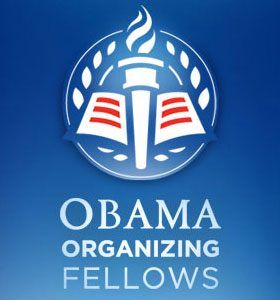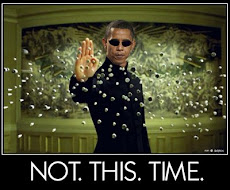Would you believe this is a movie produced by Morgan Freeman about a true histocial
incident involving Black sailers in the U.S. Navy? There are also many familiar Black actors in this film. This is a matter I either forgot or did not know about that must never be hidden to our progeny over time. It is a part of the sordid history of Black people in this country and deserves to be properly acknowledged by all as to the way our people have been desecrated in this American society. We ourselves must recall our history in order to pave the way for advances for our race now and in the future.
This Fact-based story about 320 predominantly black sailors who were killed on July 17, 1944 while loading munitions on a ship in San Francisco.
. It also solidifies any claim for reparation in this country over the centuries. It also shows how this government degrades survivors who repudiate injustices. It thus serves as a warning as well as a motivation to fight back to achieve human dignity for all.
Commentary Found: Some of the the talk around town then and to this day, was that the soldiers (in uniform) were being forced/ordered by someone or “someone's” higher in the chain of command into dangerously “racing” to move the munitions in a game of pure folly. And that the clearly pointless tragedy was the genesis of the so called “mutiny”. or so the story goes. The story hasn’t changed in the 50 or so years since I first heard it told.
In 1944,a Victory ship exploded at the Port Chicago navy base near San Francisco killing 320 and wounding hundreds more. The victims were mostly untrained African-American sailors, forced to do the dangerous (and segregated) job of loading live munitions.When 50 of the shaken survivors refused to continue the hazardous duty without proper training and equipment, the most explosive military trail in the nation's history began.
Monday, February 24, 2020
Mutiny 1999 TV Movie
The Slave Narratives
The Slave Narratives
The slave narrative is a type of literary genre involving the (written) autobiographical accounts of enslaved Africans in Great Britain and its colonies, including the later United States, Canada, and Caribbean nations. Some six thousand such narratives are estimated to exist;about 150 narratives were published as separate books or pamphlets.
The slave narratives, are accounts of the life, or a major portion of the life of slaves, of a fugitive or former slave, either written or orally related by the slave personally. Slave narratives comprise one of the most influential traditions in American literature, shaping the form and themes of some of the most celebrated and controversial writing, both in fiction and in autobiography, in the history of the United States. The vast majority of American slave narratives were authored by African Americans, but African-born Muslims who wrote in Arabic, the Cuban poet Juan Francisco Manzano, and a handful of white American sailors taken captive by North African pirates also penned narratives of their enslavement during the 19th century. From 1760 to the end of the Civil War in the United States, approximately 100 autobiographies of fugitive or former slaves appeared. After slavery was abolished in the United States in 1865, at least 50 former slaves wrote or dictated book-length accounts of their lives.
Narratives by fugitive slaves before the Civil War and by former slaves in the postbellum era are essential to the study of eighteenth- and nineteenth-century American history and literature, especially as they relate to the eleven states of the Old Confederacy, an area that included approximately one third of the population of the United States at the time when slave narratives were most widely read. As historical sources, slave narratives document slave life primarily in the American South from the invaluable perspective of first-hand experience. Increasingly in the 1840s and 1850s they reveal the struggles of people of color in the North, as fugitives from the South recorded the disparities between America's ideal of freedom and the reality of racism in the so-called "free states." After the Civil War, former slaves continued to record their experiences under slavery, partly to ensure that the newly-united nation did not forget what had threatened its existence, and partly to affirm the dedication of the ex-slave population to social and economic progress.
From a literary standpoint, the autobiographical narratives of former slaves comprise one of the most extensive and influential traditions in African American literature and culture. Until the Depression era slave narratives outnumbered novels written by African Americans. Some of the classic texts of American literature, including the two most influential nineteenth-century American novels, Harriet Beecher Stowe's Uncle Tom's Cabin (1852) and Mark Twain's Huckleberry Finn (1884), and such prize-winning contemporary novels as William Styron's The Confessions of Nat Turner (1967), and Toni Morrison's Beloved (1987), bear the direct influence of the slave narrative. Some of the most important revisionist scholarship in the historical study of American slavery in the last forty years has marshaled the slave narratives as key testimony. Slave narratives and their fictional descendants have played a major role in national debates about slavery, freedom, and American identity that have challenged the conscience and the historical consciousness of the United States ever since its founding.
After the abolition of slavery in 1865, former slaves continued to publish their autobiographies, often to show how the rigours of slavery had prepared them for full participation in the post-Civil War social and economic order. In Behind the Scenes; or, Thirty Years a Slave and Four Years in the White House (1868), Elizabeth Keckley chronicled her successful rise from enslavement in Virginia and Missouri to employment as the modiste and confidante of Mary Todd Lincoln. Former slaves who joined the post-Civil War working class began to publish their stories later in the 19th century, often articulating their disillusionment with specious promises of freedom in the North in the manner of Norvel Blair’s Book for the People…Life of Norvel Blair, of Grundy County, State of Illinois,
Found Voices : Slave Narratives The Full Broadcast -Nightline 1999
A Story of Slavery: A True Story, Repeated Word For Word As I Heard It
https://docsouth.unc.edu/neh/intro.html
https://www.britannica.com/art/slave-narrative
https://en.wikipedia.org/wiki/Slave_narrative
Subscribe to:
Posts (Atom)










































